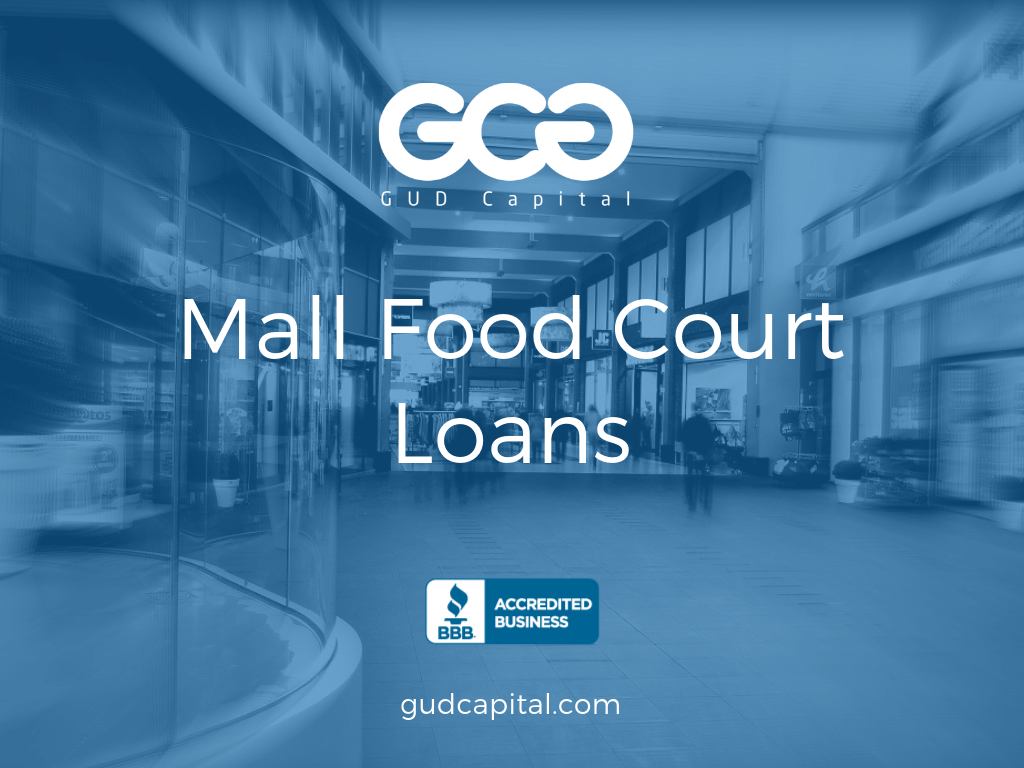Food Court Funding
Food courts have always been found at the corners of malls occupying their own space for shoppers in need of a quick bit so that they can get back to their shopping. As a result of their grab-and-go and fast formats, they have created an expectation from consumers; meaning, a competitive variety in spaces like malls, airports, and transportation centers. However, experts are seeing that this alone will not keep them afloat. Thus there is an emphasis on brands to market what differentiates them from others and to provide convenient and excellent customer service. Therefore, many malls and major stores are adopting the food court layout as well as trends associated with their services.
Quick-jump to the following sections:
- Bank Term Loans
- Bank Secured Line of Credit
- Unsecured Line of Credit
- SBA Loans
- Alternative Loans
- Equipment Leasing
- Cash Advance
One of the biggest companies developing their food courts is Costco. They are famous for having cheap and yummy options for their customers and are now revamping portions of their food court menu. They have replaced some less healthy items—such as barbeque and chocolate frozen yogurt—with vegetarian salads and acai bowls. Other Costco trends seem to be aimed at keeping up with current trends toward healthier eating. Another new dish is an al pastor salad with plant-based protein. The changes have not been wholly accepted though as Costco customers tend to be older and more suburban. That might make them less eager for change, and suggest challenges ahead as Costco attempts to increase its appeal to younger shoppers while holding on to their core shoppers. Either way, they are leading the pack in pushing for new and better food items at their food courts.
However, as some food courts are expanding on the old concepts, a new food court is emerging. Food halls are opening up across the U.S., and Instead of consisting of only fast food chains, food halls typically mix local artisan restaurants, butcher shops, and other food-oriented boutiques under one roof. Many of them celebrate quirkiness versus uniformity, and their ability to pull in crowds is particularity appealing to landlords that are battling the e-commerce and changing shopping habits we now see. Now they have been around in Europe for years, but are becoming increasingly popular in the United States as consumers are demanding healthier and better-tasting “quick casual” food options in fun environments. By 2019, there is expected to be over 200 food halls, about double the number that was open in late 2016. However, they are not just in retail outlets. Plans for a food hall on the ground floor of a planned residential and office tower in downtown Oakland is in development.
Hence, there are prominent food halls that have been conquering major cities such as New York, LA, Portland, Atlanta, and Denver that are vital to the development of food court businesses. There are no doubts that food halls are changing the ways Americans experience fast-casual chains. However, there are some negatives which include a more crowded space, long lines, lack of ambiance, and general sensory overload with diners being bombarded with too many different options. Nevertheless, they remain a new and exciting concept. A lot of the more modern developments are showcasing big names like Anthony Bourdain and celebrity chefs too. Bringing us to some of the most exciting food halls across the country that just opened or will be soon.
The super chef José Andrés has teamed up with modernist cuisine chefs to include a market area with various vendors for stand-up dining as well as multiple restaurants including a tapas bar, and plenty of retail for visitors to pick up imported foods. The Hudson Yards is being touted as the largest private real estate development in the history of the U.S. and will also be home to other influential names. All these figures are helping to cement food halls as the go-to food court concept. Another food hall can be found in D.C. called Isabella Eatery that opening in the fall of 2017. Moreover, the TV personality from Top Chef named Mike Isabella is transforming the entire top story of the massive Tysons Corner shopping mall into a food hall to a bevy of his concepts. Among the eight dining options available, Isabella includes an Italian, Sushi, and Spanish restaurant. Lastly, another critical food hall is located in Oregon, and it is their first called the Portland Food Hall. It brought with it seven micro-restaurants, a cocktail bar, and communal dining space. It also includes a coffee shop, juice bar, and healthy veggie bowls. Hence, food courts are expanding more and more by offering higher quality foods and unique layouts to keep their consumers interested and coming back for more.

Types of Mall Food Court Loans
The most common uses of mall food court restaurant loans are:
- Acquisition
- Refinancing
- Debt Consolidation
- Working Capital
- Hiring Employees
- Payroll
- Marketing & Advertising
- Expansion
- Emergency Uses
Below we will take a look at the most common loans for these uses, as well as the rates, terms and other characteristics of these small business financing products.
Term Loans
For any small business owner looking to open a restaurant in a mall food court, the first place to look is to conventional business lenders to get a bank term loan. A bank term loan can range anywhere from 3-10 years for working capital purposes and longer if for a new acquisition or build-out. Will need to have fantastic credit, and if your company is already established and producing revenue, will need to show profitability to get approved.
| Rates | 5-15% |
|---|---|
| Terms | 1-25 years |
| Funding Amounts | $50,000-$5,000,000 |
| Collateral | Required |
| Fees | Medium costs |
Secured Line of Credit
A secured line of credit is definitely a preferred financing product for not only mall food court restaurants, but for all small businesses because of the flexibility it offers. Unlike a term loan (where you receive one lump sum and pay that back each month) a line of credit allows you to have access to funds, but only requires you to pay interest on the amount you draw.
| Rates | 5-15% |
|---|---|
| Terms | 1-2 years |
| Funding Amounts | $10,000-$5,000,000 |
| Collateral | A/R Required |
| Fees | Medium costs |
Unsecured Line of Credit
An unsecured line of credit for mall food court restaurants is almost identical to a secured line of credit except for the requirements needed to get approved. While a secured line of credit will be collateralized by the business and personal assets of the business owner, an unsecured line of credit is uncollateralized and solely credit driven. Understanding that its credit driven, an unsecured line of credit requires the business owner to have fantastic credit.
| Rates | 0% for 12 months |
|---|---|
| Terms | 1-2 years |
| Funding Amounts | $10,000-$500,000 |
| Collateral | Not be Required |
| Fees | Medium costs |
SBA Loans
SBA loans are the most common financing tool used for starting new business (utilizing the SBA 7(a) loan program). While the SBA lending program is administered by the U.S. Small Business Administration, the loans aren’t actually provided by the government. Instead of lending to small business owners and food court restaurants directly, the SBA encourages conventional lenders to provide financing through an SBA enhancement – which is a guarantee to cover most of the lender’s losses if the borrower fails to repay the small business loan.
| Rates | 5-8% |
|---|---|
| Terms | 3-25 years |
| Funding Amounts | $50,000-$5,000,000 |
| Collateral | Required |
| Fees | Medium costs |
Alternative Loans
Alternative business loans for food court businesses are a little more expensive than bank term loans, and the terms are also shorter. With that having been said, they are still a quality financing product for restaurants that need financing in less than a week, or for mall food court restaurants that are not yet profitable and, thus; can’t get approved for more conventional bank financing.
| Rates | 8-25% |
|---|---|
| Terms | 1-5 years |
| Funding Amounts | $10,000-$500,000 |
| Collateral | Not required |
| Fees | Medium costs |
Equipment Leasing
Because of the unique nature of a mall food court restaurant, a business owner may not want to purchase equipment outright and get stuck with equipment that could be outdated in just a few years. An option that could be beneficial under such circumstances is to simply lease the equipment. By leasing the mall food court restaurant equipment, the business will have the option to either return the equipment at the end of the term, purchase it outright, or extend the term.
| Rates | 8-25% |
|---|---|
| Terms | 1-10 years |
| Funding Amounts | $10,000-$500,000 |
| Collateral | Not Required |
| Fees | Medium costs |
Cash Advance
A mall food court cash advance is the fastest and easiest way for a small business to access financing. In fact, a cash advance’s processes are so quick, you can be approved within an hour and funded within two hours. A cash advance is a unique financing tool in that its not a loan but, instead, the sale of the mall food court restaurant’s future earnings to a funding company in exchange for immediate financing.
| Factor rates | 1.10 – 1.50 |
|---|---|
| Terms | 3-24 months |
| Funding Amounts | $5,000-$2,000,000 |
| Collateral | Not required |
| Fees | Low to High costs |
Summary
[wp-review id=”100714″]





















